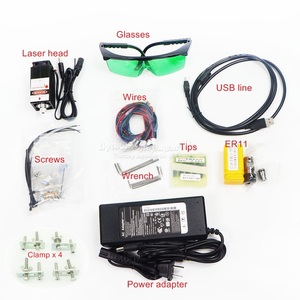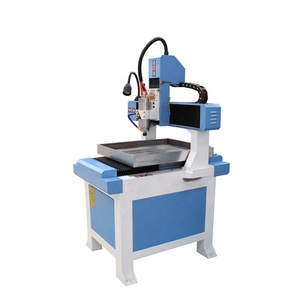(389 products available)




















 Ready to Ship
Ready to Ship




































 Ready to Ship
Ready to Ship















































































































































A mini PCB CNC router is a small-format CNC routing machine specialized for printed circuit boards (PCBs). Unlike standard CNC routers, which are designed for materials like wood, metal, or plastic, the mini PCB router makes precise cuts, engravings, and routings on electronic boards. The device is compact and can easily fit onto a benchtop or workstation. This makes it suitable for both professional workshops and home labs. Despite its small size, the mini PCB router usually has a high-speed spindle and a robust control system, allowing it to etch circuit patterns with precision. Although mini PCB CNC routers are all structured basically the same, they can be divided into several types according to their components.
Machine Component
The CNC controller in a machine is basically its brain. It interprets the design files and translates them into movements, instructing the router on how to cut the board. Mini CNC routers use typically one of two controller types: a handheld controller or a computer-based one. Handheld controllers allow users to input commands and settings directly into the device. Computer-based controllers are more advanced, allowing for the routing of more complex designs. The router also has a driving system that moves its work surfaces and spindle head with precision. Mini CNCs with belt systems are usually faster but not as precise as those with ball screw driving systems.
Machining Methods
The method a mini PCB router uses to machine materials determines the kind of material it will work best with. Spindle-driven routers have a central rotating part called a spindle. The spindle is the main part that does the cutting. These mini routers typically have multiple-speed settings to allow them to work with various materials. Direct drive routers spin their shafts at higher speeds while gear-driven routers at lower speeds, usually with more torque. Mini CNC routers can also be laser-based. Laser-cutting PCBs work a lot like spindle routers, where a design is first uploaded, and then the machine begins to cut. Laser routers can cut more delicate materials or designs that are too small for a spindle to handle.
Router vs. Mill
It's important to note that while many CNC devices cut using routing techniques, CNC milling machines are more suited to create complex circuit boards, especially multilayer ones.
Machine Size
The work area on a mini router determines its overall size. These generally range from 150 mm x 100 mm to 300 mm x 200 mm. The axis movement on the device is also limited and usually ranges from 4 to 10 Axis.
Machine Size
The overall size of a Mini PCB CNC router, usually given in length x width x height. For instance, 700mm x 650mm x 1500mm.
Working Area
The maximum size of the materials that a Mini CNC router can work on, such as 600mm x 500mm x 100mm (XYZ).
Spindle Power
The power of the spindle motor, indicating its machining power. An example could be 300W-800W adjustable.
Speed and Precision
Including spindle speed (e.g., 24000r/min), cutting speed, positioning accuracy, etc. Such as cutting speed of 8000mm/min, positioning accuracy of 0.01mm.
Control System
The type of the Mini PCB CNC router's control system and software. For example, a DSP control system with offline CNC software.
Driver and Servo System
Including step motors or servo motors and their driving methods. Such as using stepping motors and electronic encoders for drive.
Transmission Mechanism
Whether the router uses lead screws, racks, belts, etc., and the transmission ratio. For instance, XYZ axes use lead screws + racks.
Applicable Materials
Commonly used materials that the Mini CNC router can process include FR-4, metal copper coating, and other PCB materials.
Compatible Software
The software that can be used for the router's machining. For example, FUJI, DFX, CAD, and other design and conversion software.
Clean:
Users can use an air compressor or vacuum cleaner to remove dust from the router. Routine cleaning and maintenance can prevent dust from affecting machine performance and service life.
Lubrication:
For Mini CNC routers using rails, lead screws, etc., regular lubrication is necessary. Users should apply lubricant oils or grease to the sliding parts and rails to ensure smooth operation and reduce wear.
Check and adjust:
Regularly check the router's components, such as lead screws, belts, etc. Adjust them to ensure proper tension and alignment if they are loose or deformed.
Electrical parts:
Users should pay attention to cleaning and maintenance of the router's electrical components, like the control box and electrical connectors. Ensure that the connection is firm, the wires are not worn, and the dust is not present.
Cooling system:
If the Mini CNC router comes with a cooling system, users should check whether the fan and cooling system operate normally. They should remove any blockages to make sure of proper heat dissipation.
3D mini PCB routers are useful for both industrial and non-industrial applications. Below are some areas where these devices are commonly used.
Firstly, in the electronics industry, a mini CNC router machine designs circuit boards, such as PCBs used in electronic devices. These mini routers perform precise drilling, cutting, and engraving on the PCB, allowing for the easy creation of complicated circuit patterns, including the technician's required layouts and designs. The use of mini CNC routers for PCB creates a speedy and effective method for prototyping and producing circuit boards.
Also, hobbyists and small workshops use a mini CNC router to create their PCBs; these machines support DIY electronics projects. They allow users to construct their own circuit boards for custom electronic devices, gadgets, or prototypes. The mini routers are affordable, easy to use, and good for hobbyists and beginners.
Moreover, education and training institutes use a mini CNC PCB router in their workshops and labs for training purposes. The device helps students understand circuit board design, electronics, and CNC machining. Also, the compact size mini PCBs are useful in classrooms for hands-on projects, experiments, and prototypes. This aids in interactive learning and enhances students' creativity and problem-solving skills.
Finally, in the field of medical technology, a mini CNC router is used to manufacture medical devices and equipment. These routers help produce complicated circuit boards that are part of sensors, diagnostic instruments, and monitoring devices. The accuracy and compact routing feature of mini CNC routers makes them suitable for miniaturized medical devices.
When looking to purchase a mini CNC router for PCB, there are some important factors to consider. Focusing on these key issues can help make the choosing process easy and ensure that the most ideal machine is picked for the intended application.
Q1: What materials can a mini CNC router cut?
A1: A mini CNC router can cut various materials, including wood, plastic, acrylic, foam, composite material, etc. However, the cutting capability may vary depending on the machine's design and specifications.
Q2: Can a mini CNC router carve or engrave materials?
A2: Yes, a mini CNC router is capable of carving and engraving materials. It can create intricate designs, patterns, logos, text, and decorative elements by precisely removing material from the surface.
Q3: What is the accuracy of a mini CNC router?
A3: The accuracy of a mini CNC router can vary depending on its construction, components, and calibration. Generally, mini CNC routers can achieve an accuracy of around 0.1 mm to 0.5 mm.
Q4: What software is used to operate a mini CNC router?
A4: Mini CNC routers are typically operated using CAD/CAM software. This software allows users to design their desired cuts, engravings, or carvings and convert them into toolpath instructions that the CNC router can follow.